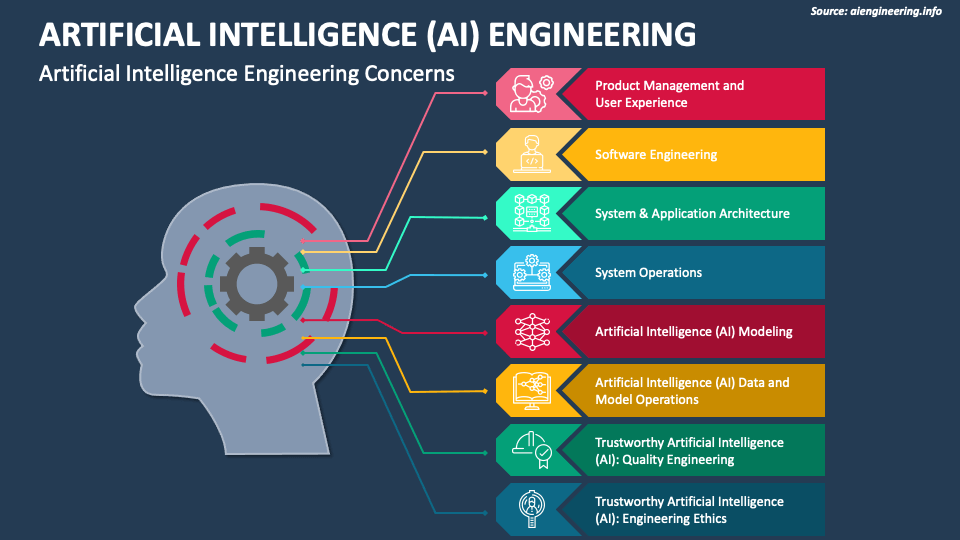AI-Driven Business Intelligence: Revolutionizing Data Analysis – AI-Driven Business Intelligence Revolutionizing Data Analysis is at the forefront of transforming how businesses leverage data for decision-making. In an era where data is abundant yet complex, AI technologies are reshaping the landscape of data analysis, making it more accessible and insightful. With powerful algorithms and machine learning capabilities, organizations can now uncover patterns and trends that were previously hidden, leading to more informed strategies and improved outcomes.
This comprehensive approach not only enhances traditional analytics but also introduces innovative methods of processing and interpreting data. By integrating artificial intelligence into business intelligence frameworks, companies can streamline operations, predict market trends, and personalize customer experiences, ensuring a competitive edge in today’s fast-paced marketplace.
In today’s fast-paced world, the importance of effective communication cannot be overstated. Whether in personal relationships or professional settings, the ability to convey thoughts and ideas clearly is essential. However, communication goes beyond mere words; it encompasses body language, tone, and even the medium through which we interact. In this article, we’ll explore the nuances of communication, the barriers that can hinder it, and some strategies to enhance your communicative abilities.One of the first things to consider when discussing communication is the various forms it takes.
Verbal communication, which includes spoken and written language, is perhaps the most common form. However, non-verbal communication—such as gestures, facial expressions, and posture—plays a crucial role in how our messages are received. For instance, a simple smile can convey warmth and friendliness, while crossed arms might signal defensiveness or discomfort. It’s important to be mindful of these non-verbal cues, as they can significantly alter the interpretation of our words.Another essential aspect of communication is active listening.
This skill involves fully concentrating on what is being said, rather than just passively hearing the message. Active listening requires engagement with the speaker, often through nodding, maintaining eye contact, and providing feedback. By doing so, you not only show respect but also enhance your understanding of the conversation. This can lead to more meaningful exchanges and reduce misunderstandings.However, barriers to effective communication are prevalent in many contexts.
One common barrier is noise—whether literal, such as background sounds, or figurative, such as distractions from mobile devices. Such noise can prevent the listener from fully absorbing the message. Additionally, emotional barriers—like anger, frustration, or anxiety—can cloud judgment and hinder the ability to communicate clearly. To overcome these barriers, it’s vital to create an environment conducive to open dialogue and to approach conversations with a calm and rational mindset.The medium of communication is another factor to consider.
In our digital age, we have an array of platforms at our disposal, from emails and text messages to social media and video calls. Each medium has its own strengths and weaknesses. For example, while emails allow for thoughtful responses, they can sometimes lead to misinterpretations due to the absence of tone and body language. On the other hand, face-to-face communication allows for immediate feedback and fosters a stronger connection but may not always be feasible.
Understanding when to use each medium can improve the effectiveness of your communication.Furthermore, clarity is key in conveying messages effectively. Using simple language and avoiding jargon can help ensure that your audience understands your point. It’s also beneficial to structure your thoughts logically. Start with a clear introduction, followed by the main points, and conclude with a summary. This structure helps guide the listener or reader through your message and reinforces your key ideas.Cultural differences also play a significant role in communication.
Various cultures have distinct communication styles, norms, and expectations. For instance, some cultures may value direct communication, while others may prefer a more indirect approach. Being aware of these differences can help you navigate conversations with individuals from diverse backgrounds, fostering respect and understanding.In addition to understanding barriers and styles, it’s crucial to foster emotional intelligence in your communication efforts.
Emotional intelligence refers to the capacity to recognize and manage your own emotions, as well as the ability to empathize with others. By developing this skill, you can better navigate social interactions, respond appropriately to the emotions of others, and build stronger relationships.Feedback is another critical component of effective communication. Providing constructive feedback can help individuals improve and grow, while also ensuring that they feel heard and valued.
When giving feedback, it’s essential to be specific and focus on the behavior rather than the person. This approach prevents the receiver from feeling attacked and encourages a more productive dialogue.Moreover, conflict resolution is an integral part of communication. Disagreements are inevitable, but how we handle them can significantly impact our relationships. Approaching conflicts with a mindset of collaboration—seeking to understand the other person’s perspective and finding common ground—can lead to more favorable outcomes.
It’s important to remain calm and composed during disagreements, as emotional responses can escalate tensions and hinder resolution efforts.In the workplace, effective communication is particularly crucial. Teams with strong communication skills tend to be more productive and cohesive. Leaders play a vital role in setting the tone for communication within their teams. By modeling open and transparent communication, leaders can encourage their team members to share ideas, provide feedback, and voice concerns.
This openness fosters a culture of trust and collaboration, ultimately leading to better results.In conclusion, effective communication is a multifaceted skill that requires practice and awareness. By recognizing the various forms of communication, honing active listening skills, and understanding the barriers that can impede dialogue, individuals can enhance their communicative abilities. Additionally, embracing emotional intelligence, providing constructive feedback, and effectively navigating conflicts are all essential components of successful communication.

Whether in personal relationships or professional settings, investing time in improving communication skills will yield significant benefits, leading to deeper connections and more productive interactions.




